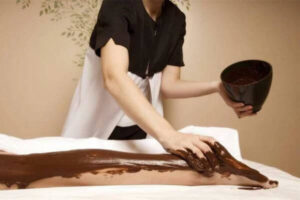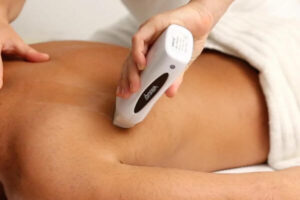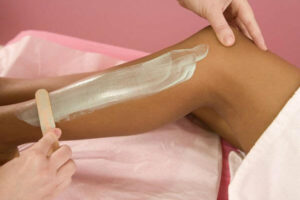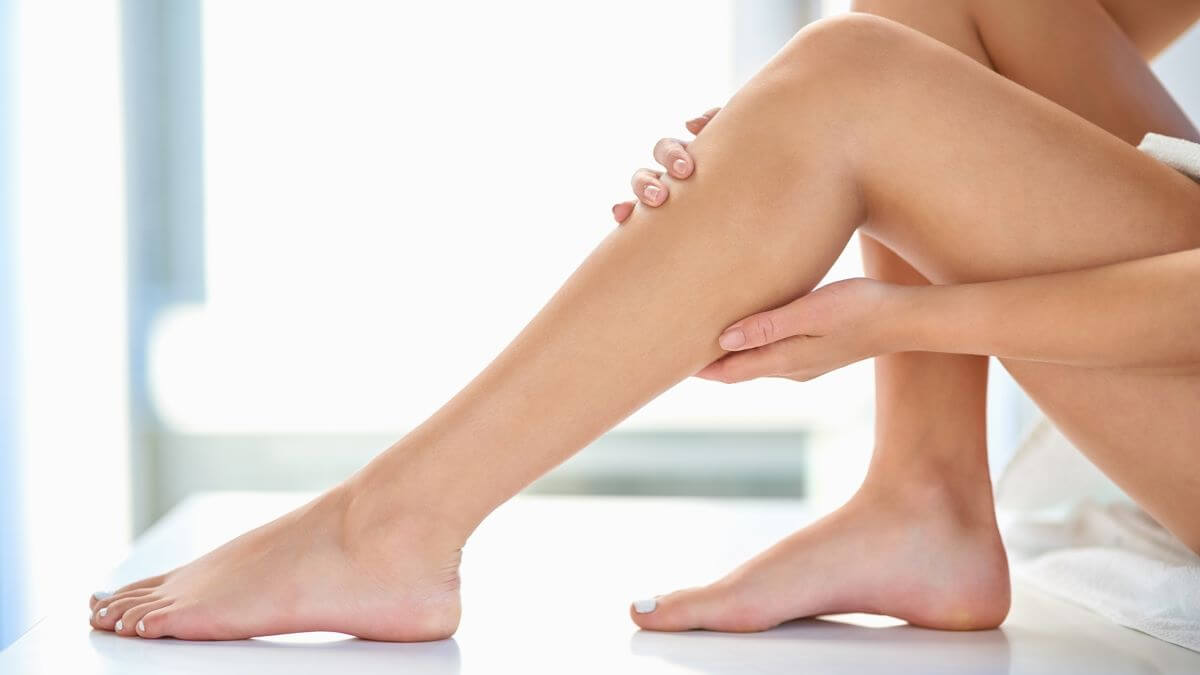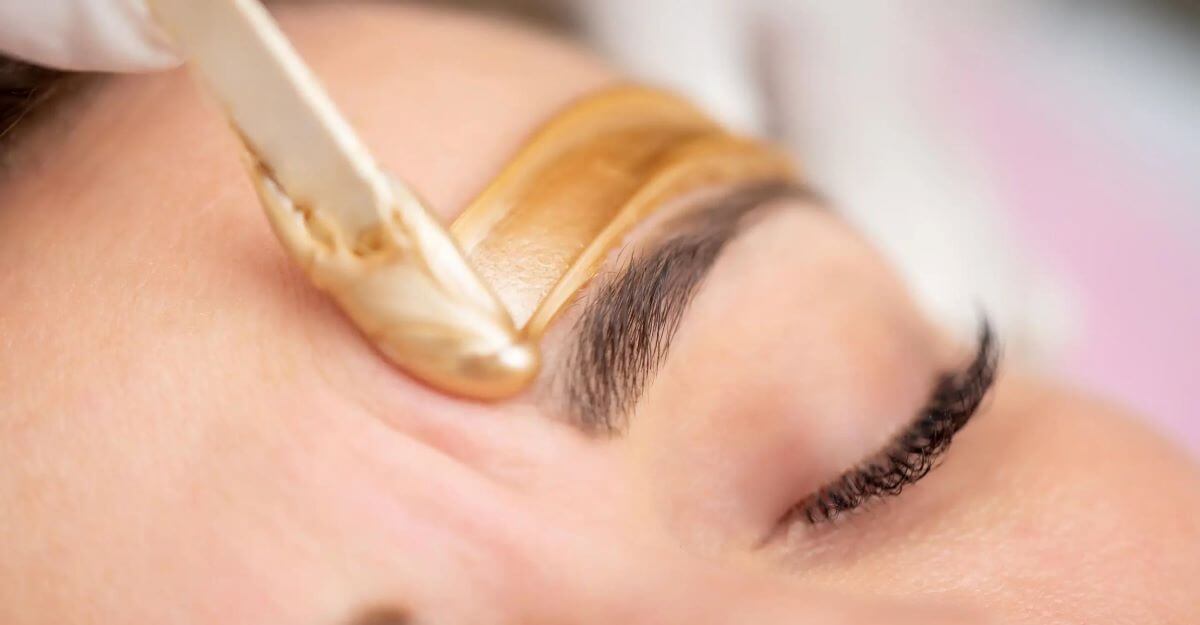Do you know how to choose a wax for hair removal? If you want to get the best results, the wax you choose for each part of your body is different. In today’s guide, we will take you through how to choose a wax for your legs and a wax for your face. Our guides can help those who don’t know how to choose a wax product, so keep reading to learn more.
1. Two main types of wax
There are two main types of wax: hard wax and soft wax.
- A hard wax is a wax that hardens on contact with the skin. It is usually heated and then applied to the treatment area, where it adheres to the hair rather than the skin until removed. While you can use tape to remove the wax, it’s not necessary. This is commonly used in salons.
- Soft wax refers to thinner wax that is soft to the touch and needs to be removed with a strip. It is commonly used for home waxing strips and does not require preheating before use. But unlike hard wax, it sticks to hair and skin, which means it’s more likely to cause irritation.
These are the two main umbrellas for wax, but there are actually many more types. Think sugared (is this a wax too?), or the lesser-known cold wax. There are many factors to consider, and some may be better suited than others for your skin type, pain tolerance, and needs.
2. How to choose the wax for legs?
Body wax is safe to apply to almost any part of the body and always works great. Professional wax removes unwanted body hair in one go, leaving skin soft and velvety smooth in just a few minutes. This is evident with all wax treatments, but especially when waxing legs. Almost everyone suffers from painful leg hair, and post-wax contrast is all one could ask for. The legs are also one of the larger parts of the body compared to other popular treatments like armpits and facial waxes. We provide you with detailed process instructions to help you find the best option among all the waxes available today.
1) Waxing your legs – the do’s and don’ts
Leg waxes are often people’s introduction to the world of professional waxes. New clients may find waxing for the first time less painful because the skin around the legs is thicker and less prone to infection. Often, newbies have already tried other hair removal methods on their legs before their waxing appointment, which also makes the whole experience less intimidating for them. Leg hair tends to be thicker, especially if you’ve tried shaving in the past.
Because of this and all the skin you have to go through, leg waxing takes patience, and enough experience to know how much wax to heat without letting it go to waste. Without the right skill set, waxing at home can lead to ingrown hairs after a few days, leaving your skin itchy and rough to the touch. In the long run, a professional waxing service will be the best option to keep your skin smooth and beautiful.
When it comes to leg waxes, the time between treatments is four weeks, depending on the length of the hair’s regrowth cycle. Some of the steps you need to take between waxing sessions include regular exfoliation but not too close to the designated date, removing all traces of soaps, creams, and makeup from the skin before waxing, and being mindful of acne/other possibilities of Skin problems that make waxing dangerous.
Post-wax care requires at least 24 hours out of sunlight. If you plan to wax your legs for a day at the beach or any other outdoor activity, be sure to factor in the two-day recovery period after each session. No physical activity of any kind is allowed for these two days. Professional post-wax products can go a long way in preventing infection, but you should also be careful with certain skin care formulations while your pores are still open, mainly those that contain fragrances and artificial ingredients.
As expected, the success of waxing depends largely on using the right products for each area of the skin. The legs are a fairly easy area to deal with in this department, but the products you use can still have an impact on the overall result. So, what’s the best leg wax?
2) The best soft waxes for smooth, hair-free legs
Soft wax is the safest and most practical choice when waxing large areas of skin such as the legs, arms, and back. We’ve enhanced all the benefits of soft wax with a variety of options to tailor your waxing experience to your needs. Infused with natural ingredients like turpentine, honey, and coconut oil, as well as vitamins to protect the skin from infection, our waxes ensure your skin stays silky smooth, and healthy for weeks after waxing. Here are some advantages you can gain when using our exclusive line of soft body waxes:
- Soft wax is relatively easy to work with. Lay them down in a very thin layer, wait a few seconds for the wax to get on your hair, and the groomer will use a muslin/non-woven strip to remove the wax without leaving a mess. The soft wax spreads out in the direction of hair growth and tears away in the opposite direction.
- They are ideal for saving time when working on large areas of skin. They’re also great on particularly thick areas and on coarser hair.
- They provide more working time without cracking, which also makes them the most practical choice if the preferred technique involves applying long coats of wax.
- They’re affordable and may come in a variety of forms at your local salon.
- Aupewel’s soft waxes have a low melting point, making the waxing process more comfortable.
With soft wax, beauticians can complete leg waxing without wasting time or causing discomfort to clients. While leg waxing doesn’t require complicated techniques, hairs can also be noticeable when they aren’t properly removed. Soft waxes can’t be applied more than once to the same area, so it’s in everyone’s best interest to choose a formula that ensures cleansing without pushing the skin to its limits.
3) 6 hair removal products for legs
Don’t worry about leg waxing time. It can be a walk in the park if you choose the right hair removal products. Since we’re experts in waxing and waxing, we’ll always recommend soft wax, hard wax, or cold hair removal creams for leg hair removal, but we know how important it is to have knowledge of all the options available. Therefore, we will organize several hair removal products for you to choose from according to your preferences. Get ready to rock stunning legs!
Here are six recommended waxes for large legs.
#1. Soft wax suitable for waxing legs
To create flawless legs, both aestheticians and DIYers use waxes. The choice depends on which type of wax makes your operation the most comfortable, the results you get from using them, and how useful they are to you. Soft waxes are very effective for waxing the legs, especially for people with thinning hair (since this type of wax cannot be reapplied twice on the same area or it will excessively strip the skin).
Soft wax also tends to be more economical than other types, making it a great choice. Roller balls are also made of soft wax and have the same benefits. If you’re looking for a soft wax that will brighten and detoxify the skin, we recommend the Luxe Detox Soft Wax, which combines activated charcoal and caviar extract to provide the skin with two excellent detoxifying agents that cleanse the skin of impurities. Professionals and regular clients alike can enjoy the creamy texture of this wax and find it incredibly easy to apply (also available in a roll-on version).
For example, I have a friend who is a grid drain strainer supplier. Usually, her work is very busy, sleep time is very little, so her skin is very dark. In a small talk, she complained to me that she was very upset because she didn’t know how to take care of her bad leg hair. So I recommended Luxe Detox Soft Wax. She later told me that the wax was very easy to use and easy to apply.
#2. Hard wax for leg waxing
Many salons prefer to use hard wax for most procedures, including leg waxing. The reasons are multiple: it’s easier to apply and clean up, more spreadable and can be reapplied in the same spot (which helps hairier clients). The best hard waxes for legs should contain extra moisturizing and brightening ingredients. The Wax Charm Beads do exactly that: They’re infused with argan oil, the Middle Eastern secret skin-softening elixir, and gold powder. result? Ultra smooth and glowing legs.
#3. Cold wax strips for leg waxing
This is probably the most popular choice for DIY waxers. It has several advantages: they require little preparation; they are portable and easy to use without any experience. The only issue might have to do with their effectiveness on coarse or thick hair, but they’re great for quick upkeep. Want to use them like a pro?
Go to “How to Use Cold Wax Strips”. Cold wax strip packs are great for home use, so keep a pack of body strips and a pack of facial strips on hand for those occasional visits to the wax bar. Our selection is enriched with Aloe Vera and comes with post-epilation wipes with calming oils and growth inhibitors. Waxing has never been easier.
#4. Epilator
Many women choose these machines over shaving or body waxing because of their ease of use at home and long-lasting results. The epilator works like tweezer heads on a rotating piece; they grab the hair and pull it from the root. Some people think epilators are more painful than waxing, while others hold the opposite opinion.
According to some, the advantages of this method are several: saving money on serial appointments or other hair removal products, doing it at home, and most importantly, three to four weeks of hair-free skin. Also, once you epilate more often, the hair roots will weaken and produce thinning hair.
#5. Hair removal cream
If you’re looking for chemical hair removal products, these creams have what you need. They contain chemicals that break down the hair and dissolve it, providing completely painless hair removal. If your pain threshold is too low, hair removal creams or a good razor are the only options. Hair removal creams are so cheap, and now they have better formulas and better scents (they used to be frowned upon because of the strong smell).
It is important to perform a patch test before using it on a large area to rule out any adverse reactions you may have.
#6. Household laser equipment
Professional laser removal has a home counterpart: you can use laser equipment in the comfort and privacy of your own home. The wavelengths used by these devices are not that effective on all but fair skin and dark hair. If you have these characteristics and have already taken professional laser courses, then you can really take advantage of them. But keep in mind these can be a bit pricey.
3. How do you choose the best wax for the face?
There’s a lot to love about facial waxes. Facial waxing services are one of the easiest ways to get rid of unwanted hair without leaving marks or triggering an allergic reaction. While it’s true that the face is one of the most sensitive areas, you’ll need little time to get used to minor discomfort before the treatment is virtually painless. Hard body waxes have a lot to do with this, as they adhere to the hair without forcing you to pull the skin, so they are often the first choice of estheticians when performing facial procedures. Let’s take a closer look:
1) Waxing facial hair
If you’re familiar with waxing in general, you’ll recognize the many steps involved in facial waxing. A facial wax takes less time than a body wax service but also requires thoughtful technique to avoid injury. The skin is thinner and more delicate, so you need very precise and the best formulations to avoid unpleasant side effects. Our blog, The Steps to Facial Waxing, details all the intricate details that set facial services apart from other waxing treatments. Before we dive into the best facial wax products, let’s address some of the most common questions people ask:
#1. Is waxing the best option for my face?
This is a legitimate question many new customers ask. With so many hair removal options, is the pain of a facial wax really worth it? Part of the beautician’s job is to ease people’s concerns while demonstrating all the benefits of facial waxing services. Regular waxes gradually weaken the hair follicles, so the hair becomes thinner. In addition to being a long-term benefit that other methods cannot provide, this is also a great advantage for clients who are concerned about hiding facial hair between waxing sessions. Even after the first waxing service, the skin will remain smooth and hair-free for 3 to 6 weeks.
#2. Does it hurt?
There will be a degree of pain experienced by first-timers, and it all depends on the individual’s overall tolerance for pain. The good news is, you can get a facial wax done in under 10 minutes, so you don’t have to worry about sitting for long periods of time. Once people start waxing regularly, the pain begins to decrease with each new session. Even so, the wax will play a big role in getting the client to accept the treatment since the face is one of the most sensitive parts of the body. Since the skin on the upper lip and brow arch is very delicate, the beautician needs to remove all the hair after one coat of wax, otherwise, they may end up breaking the skin.
#3. Will the facial wax irritate the skin?
This is a risk in all areas where the skin is naturally thinner and is one of the main reasons why facial waxes should be left to professionals. The face is indeed prone to post-wax irritation, so an experienced esthetician will always keep an eye on the skin after applying the product/removing a layer of wax. They also soothe the skin immediately after waxing. A post-wax treatment is essential to relieve irritation, heal the skin, and promote cell regeneration. Waxed areas may feel itchy for hours, so clients should refrain from scratching, keep out of direct sunlight, and apply a natural soothing lotion until the irritation subsides.
2) The best wax for your face
Determining the best formulation for performing facial waxing is important, especially for clients who plan to start regular waxing sessions. With a firm body wax, you can prevent excessive pulling and ensure an overall pleasant experience for your clients. Since only a small area of skin is involved with each application, facial waxes require minimal product waste, making it easier to address the specifics of hard waxes without losing their optimum consistency. If you want the best hard waxes to satisfy your clients, our signature line of hard waxes is the solution you need to treat all skin types and provide your clients with the best results.
Fine wax: Our exclusive Fine wax provides everything you need in terms of safety and operability. It has a low melting point and can be applied in very thin layers to avoid product waste, so you can use it to ensure a fast and efficient process. Fine wax is rich in cotton oil, so it is an excellent antioxidant without any risk to sensitive skin.
Mediterranean Blue Beads: These have a lot in common with Beauty Image’s Fineax, such as its nourishing properties and practical benefits. The combined properties of Argan Oil and Pearl Pigment provide deep hydration and maintain a healthy glow for hours after your treatment. Our Mediterranean blue beads are flexible enough to allow for precision when working in small areas like eyebrows and upper lip.
Vegan Maxipearls: One of the highlights of our Madagascar range, Vegan Maxipearls harnesses the properties of Tamanu Oil to soothe and moisturize the skin from within. Thanks to its creamy texture and quick-drying formula, vegan maxipearls minimize the discomfort often felt immediately after wax treatments.
Clients with low pain thresholds can benefit from Depilense Ayurvedic Beads. Infused with Lotus Extract, Depilense Ayurveda Beads provide gentle care until the skin is soft and glowing.
4. Shave or wax
We all know how annoying it can be to deal with unwanted body hair. Sometimes people choose treatments that are just as uncomfortable, leaving behind itching that’s hard to ignore. Professional wax is one of the most popular options for solving this problem.
Shaving is another method that has remained popular over the years, probably because it’s cheap. Homemade waxes are also common, but most people turn to shaving when they don’t have time to schedule a wax appointment. Knowing how popular these two options are, let’s see which is better once and for all.
1) Shaving vs waxing – which is better?
Waxing and shaving follow very different approaches. The former allows the wax to cool on the skin to rip the hair from the follicle, while the latter uses a razor to scrape the visible hair along the skin. Comparing the two, we can see that each is reserved for very specific purposes.
For most people, hair removal is the method of choice for sensitive areas like the armpits and bikini area. Facial waxes are also popular because there is no risk of thickening hair after each session. Both epilation and shaving are popular options when it comes to less sensitive areas of the body like arms and legs.
Both can remove body hair from large areas of skin in a short amount of time and with little to no risk. Regardless of one’s preferences, there is a particular problem that can tip the scales in a particular direction.
2) How fast does hair grow back?
As we mentioned before, waxing rips the hair from the root, exposing the follicle and prolonging the time before the hair grows long enough to be visible. This has the added benefit that all hairs in an area begin to follow the same regrowth cycle, making it easier to plan future hair removal treatments.
Because waxing thins the hair and slows its growth rate, it usually takes 3 to 6 weeks for the hair to fully grow back. Shaving is a convenient method that anyone can try in the comfort of their own home, so as long as your hair grows long enough, you can shave however you want.
The downside is the interruption of the hair regrowth cycle. When you shave, you’re cutting a section of hair, not pulling it out of the follicle. This is why the hair begins to thicken, usually a week after shaving, if not less. There’s no denying that shaving is more accessible, a perk that anyone with a tight schedule can enjoy. For example, I have a friend who is a floor lamp manufacturer. She is so busy at work that she doesn’t have time to go to a beauty salon for waxing. So, to save time, she chose to shave herself at home. It’s faster than waxing.
They can incorporate a quick shave into their hygiene routine without taking time for other activities. Still, you’ll need to shave almost every week, and when the hairs get thicker and more noticeable, it can make the shaving process even more of a hassle. Other factors people consider before choosing a hair removal method are:
- Pain and comfort: Wax therapy can be painful. It all depends on the part of the body and the person’s pain tolerance, but they are never completely pain-free. After the first wax, the process becomes more bearable and the beautician will make sure to create a comfortable environment where the client can relax.
There are also waxes specially formulated to provide gentle care for sensitive areas. Shaving involves a mostly painless process. People may break their skin the first few times they use a razor, but it’s not difficult to get the hang of shaving different body parts. This is one of the main reasons some people prefer to shave weekly rather than subject their skin to the brief discomfort of waxing.
- Side effects: Each method affects the skin in different ways. In both cases, residual itching can last for hours after epilation, but there are lotions that can help soothe the skin more quickly. After waxing, the itchiness stems from its mild exfoliating properties, which leave the hair follicles exposed after plucking; when shaving, it’s because the razor passes through the skin as it shaves.
Depending on the sensitivity of the skin, blood spots may also appear, especially in areas where the skin is naturally thinner. Ingrown hairs are more common when shaving but can also occur when the hair is not evenly waxed.
- Skin Care Pros and Cons: Having covered the immediate side effects, let’s look at what happens to the skin after following a regular hair removal routine.
You can shave without putting too much pressure on the skin, so injuries/marks are only an exception if you use a new razor.
However, shaving regularly can dry out your skin and make it rougher to the touch. This is understandable since one has to shave often and the hair grows back very quickly.
You can reduce the amount of waxing to avoid stressing the skin. Plus, the professional wax formula is enriched with nourishing properties to help maintain a velvety texture and healthy appearance.
All in all, waxing is a better long-term solution and is gentler on the skin, but you should still leave this process to a professional beautician, especially when it comes to Brazilian waxes and other hard-to-reach body parts on your own. A professional waxing service will provide you with a good experience and the best waxing formula in the market to protect your skin from injury or infection.
You can manage unwanted body hair while taking care of your client’s skin. We offer the most unique wax formulations to treat every area of the body. Estheticians know our products and accessories are second to none and the results speak for themselves.
5. 7 hair removal waxes used by estheticians
Here are the seven types of hair removal wax most commonly used by estheticians.
1) Warm soft wax
Soft warm wax is cream or resin-based and is used for strip waxing. Warm it gently and apply a thin layer to your skin. Press the strip on and remove it, taking the hair with it. Spreadable wax is often used to cover larger areas, such as legs and arms. While it’s very effective at removing even the finest hairs, soft wax can also stick to the skin, so only use it once per area to avoid irritation.
Cream-based warm waxes are gentler on the skin. Honey/resin-based hot waxes are considered old school and can be too hot and sticky, which can irritate the skin. However, there are many skilled estheticians who can still provide great waxes with honey/resin-based waxes. We don’t recommend using honey or resin products on sensitive skin because they may be too hot, sticky, and abrasive.
2) Warm hard wax
Hard wax is an effective option for both areas with thicker hair and fine, sparse hair. The wax is applied when heated and hardens as it cools. It is also called stripless wax because, in its hardened state, it resembles strips on its own. After cleansing, a small amount of pre-epilation oil is usually applied to the skin to protect it from wax. After the wax is heated to a spreadable state, Sheth explains, it hardens into a flexible material that is pulled off by a ‘lip’ created by the provider.
Hard wax is applied in a thicker layer than soft wax, and also in the direction of hair growth – an important detail. Pulling hair in the wrong direction can cause hair breakage and ingrown hairs. When the wax hardens, the wax grabs the hair in a shrink-wrap manner rather than sticking to the skin like soft wax. This makes it better suited for smaller, more sensitive areas like lips, nose, underarms, and bikini areas. When used on larger areas such as the legs, it can cause hair breakage at the end of the pull.
Its gentle nature is great for people with sensitive skin, but may not be enough to grab the hair on the bulb, meaning you may need to wipe a single area multiple times. Cheaper hard wax varieties may become brittle and inflexible as they cool, which can create a mess and inefficient waxing. So if you plan on waxing yourself, make sure you buy a high-quality wax,
3) Cold soft wax
Cold soft wax can usually be purchased in cans or pre-made waxing strips. For products that come in jars or jars, you just need a craft stick to scoop it out and apply it directly to your skin.
The benefit of this wax is that it avoids the risk of burning your skin, a potential disadvantage of using hard wax. That being said, it can be difficult to apply an even layer, and because it also sticks to the skin, it can cause irritation if you apply it to the same area multiple times.
4) Premade wax strips
Pre-made wax strips come with just the right amount of cold soft wax and are ready to use, with no heating required. This method is the most user-friendly and clutter-free option and is great for beginners as there is no opportunity to place too many products. Although not required, it is recommended to rub the wax strips between your palms to “warm” them a little so they stick to the hair more. This step may also be necessary to separate the wax strips from each other.
Cold rolled strip requires minimal preparation and fewer moving parts throughout the operation, making it by far the most convenient travel option. As with any cold wax, there is no risk of burning the skin. Shays recommends using pre-made strips for smaller areas because they are not as easy to apply as hot wax.
5) Fruit wax
Although not very common, fruit wax actually has many skin care benefits due to its natural exfoliating and nourishing properties. For example, exfoliating fruit enzymes gently removes bumpy texture, while extracts from fruits like plums, papayas, and strawberries are rich in antioxidants, anti-inflammatory agents, and brightening properties. Fruit wax has so many benefits that it almost acts as a skincare product.
Fruit Wax falls under the hard wax umbrella, which means you don’t need to use strips to remove it after use. What’s more, it’s safe to use even on super-sensitive skin. (However, we still recommend patch testing, just in case.)
6) Sugar wax
Sugar waxing is one of the oldest known methods of waxing and originated in the Middle East. It’s also one of the most natural and simplest recipes, usually consisting of some combination of sugar, lemon, and hot water. Sugared isn’t wax: It’s a form of hair remover but without the same base. Technically, wax or not, there’s a reason this method of hair removal has been around for centuries.
It is very gentle compared to other waxes, making it ideal for sensitive and reactive skin. Sugar wax works much like hard wax in that it grabs the hair without sticking to the skin. This type of formula allows multiple applications to an area without the irritation caused by soft wax. Sugar wax can be a sticky ball applied with your fingers or a soft wax used with strips. Because it can move easily, sugaring can remove hair from large or small areas of the body, however, it is most effective for fine to medium hair types.
Unlike resin-based hard or soft waxes, sugar wax is water-soluble, which makes cleaning easier. This will also result in fewer ingrown hairs because the product won’t get stuck in open hair follicles, preventing hair from regrowing.
Tip: Apply sugar wax the opposite way of traditional wax: against the grain, then remove with the grain.
7) Chocolate wax
Chocolate wax is gentle on the skin and is known as one of the least painful types of wax. It’s moisturizing and rich in soothing and nourishing ingredients like almond oil, soybean oil, sunflower oil, glycerin, vitamin E, and other minerals. Cocoa itself is rich in antioxidants and acts as an emollient for the wax. Almond oil has anti-inflammatory properties – a benefit that is much appreciated when hair is pulled out of the hair follicle.
Main ingredients: Almond oil is a moisturizer, rich in vitamin D, vitamin E, and various minerals. It helps soothe skin from irritation and protects skin from harmful UV radiation.
Chocolate wax can be soft or hard, but it should always be applied while warm. It has a lower melting point, so it is less likely to cause burns. This luxury experience comes with a hefty price tag, but for many, the glowing skin and spa-like pampering are worth it.
6. Conclusion
The above are the ways how to choose the right wax for yourself compiled by Auperwel for you. After reading this article, you can choose the beeswax that suits you based on your actual situation. If you have any other questions about hair removal, you are welcome to contact us at any time.
How useful was this post?
Click on a star to rate it!
Average rating 0 / 5. Vote count: 0
No votes so far! Be the first to rate this post.
